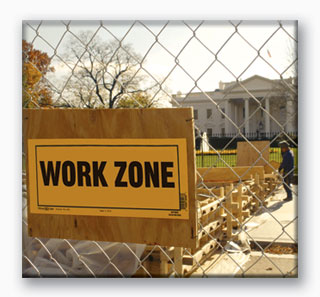Barack Obama’s election was historic, but can his presidency be great?
At a time of historic economic, social, and strategic challenges, the election of Barack Obama offers Americans the hope that we can rise above the many forces pulling us down, but more, that we can even rise above the worst of ourselves—the original sin of racism and the lingering structural toxins of prejudice and discrimination.
As Mr. Obama prepares to go to Washington, we find ourselves at a “Now what?” moment. The obstacles before us are historic, and the pressure on this new administration to deliver on its theme of change is enormous. Here are some agenda items to consider in these first 100 days:
On health care: Obama has targeted the deplorable state of our health care system for reform, but his strategy for healing it relies on some of the same free-market mechanisms that are already driving U.S. health care into the ground. Surely we can be more imaginative, more bold in addressing this chronic structural dysfunction.
Finding a way to take the profit hounds out of the delivery of health services in America should be part of the discussion toward building a rational system. Perhaps before locking into a new approach, it is time to open this matter up to a real, transparent debate rather than continuing to hash out a fix among the system’s competing and self-serving health sector interests.
On the federal budget: All bets should be off as we confront growing budget deficits in balance against U.S. social needs. Defense spending cannot be sacrosanct while basic services and the future of our children are put on the budget block. Why? Ask bank robber Willie Sutton: “Because that’s where the money is.”
On Iraq: Obama has promised to wind down America’s intervention in Iraq. How can he conduct a strategic withdrawal that protects American service members and overall security without further imperiling the people of Iraq?
On abortion: Many pro-life Catholics put their careers and reputations on the line to argue for a vote for Obama. How can he begin to work past the rhetoric to build a social structure that encourages those facing an unplanned pregnancy to choose life instead of death? How can the church help?
On the threat of global terrorism: Obama understands that America’s comprehensive security concerns cannot be resolved through the application of brute military force alone. Can he convince the public and Congress that soft-power solutions to blunt the threat of Islamist maximalists are also essential to long-term success against this amorphous, evolving threat?
On energy independence: As the price of oil declines, the sense of urgency on alternative energy threatens to diminish even as new voices and lobbying campaigns promote retrograde and dangerous solutions. Will Obama be able to stay his focus on rational, sustainable energy solutions?
On the economy: The Catholic Church has long advocated an economic structure built in service to humanity—all humanity—not the other way around. We have recently experienced the latest reminder of the wisdom of that injunction.
How will Obama craft a just economic order out of the latest dust pile generated by America’s faith in liberalism’s free-market wonderworks. There will be powerful forces seeking to recreate an order that protects the special interests and comfort of the few against the crying needs of the many.
Can we begin to build a new, sustainable economic order that offers opportunity and advancement to all Americans while stewarding the gifts of creation and lifting up our brothers and sisters in the developing world?
Obama has proven that he can see clearly, think critically, and move effectively, but running a crisp campaign is one thing, surviving the murky realities of Foggy Bottom and its hazardous environs something else entirely.
It’s nice to believe in change, but in this life you have to work hard for it, too. Can Obama’s be a great presidency? Maybe. We just need to apply some of the same yes-we-can-do spirit that brought this unlikely candidate from the streets of Chicago all the way to Pennsylvania Avenue.
This article appeared in the January 2009 issue of U.S. Catholic (Vol. 74, No. 1, page 46).











Add comment